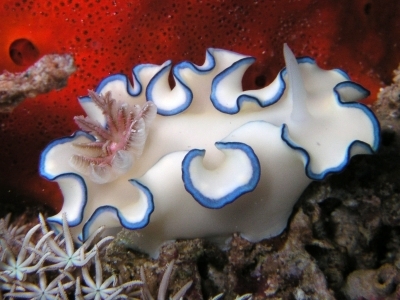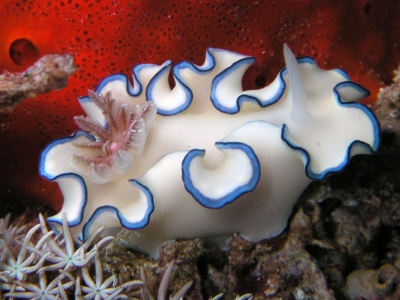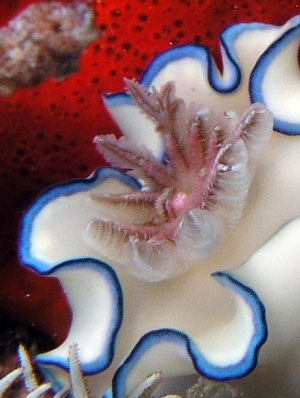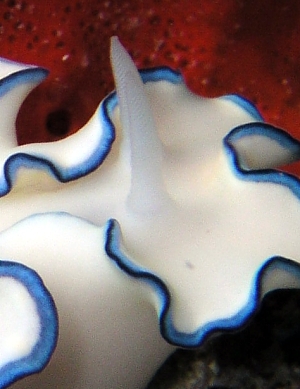
Glossodoris sp. 16
Order: NUDIBRANCHIA
Suborder: DORIDINA
Superfamily: EUDORIDOIDEA
Family: Chromodorididae
DISTRIBUTION
Known only from the Red Sea
PHOTO
Locality: El Quseir, 30 m, Egypt, Red Sea, 21 June 2006. Length: 2.5 - 5 cm. Photographer: Annick Maurer
The white body, with a bright blue mantle border, edged in dark blue or black, should be good characters for this species.
.
Authorship detailsRudman, W.B., 2006 (July 24) Glossodoris sp. 16 [In] Sea Slug Forum. Australian Museum, Sydney. Available from http://www.seaslugforum.net/find/glossp16
Related messages
Glossodoris sp. 16 from the Egyptian Red Sea
December 14, 2009
From: Mónica Alonso

Dear Bill:
We found this specimen of Glossodoris at the Red Sea, in a place called Erg Somaya, near Hurghada.
We think it matches with Glossodoris sp.16 with no actual name.
Locality: Erg Somaya, near Hurghada, 15-18 m, Egypt, Red Sea, 10 June 2009. Length: 2-3 cm. Photographer: Luis Abad.
Regards,
Mónica
monicaalonso091170@hotmail.com
Mónca Alonso, 2009 (Dec 14) Glossodoris sp. 16 from the Egyptian Red Sea. [Message in] Sea Slug Forum. Australian Museum, Sydney. Available from http://www.seaslugforum.net/find/22960
Dear Mónica,
Yes this is what I am calling Glossodoris sp. 16. I am calling it that because at present it does not have a name. The yellowish sponge it is on could well be its food.
Best wishes,
Bill Rudman
New Glossodoris from the Red Sea
July 25, 2006
From: Annick Maurer

Dear Bill
I took this photo in June of a sea slug in El Quseir / Egypt. I can`t find it in the forum. That means, I`ll need some help.
Locality: El Quseir, 30 m, Egypt, Red Sea, 21 June 2006. Length: 2.5 - 5 cm. Photographer: Annick Maurer.
Thank you
Annick Maurer
annick_maurer@yahoo.de


Dear Nicky,
Even though the chromodorid nudibranchs are some of the most spectacularly coloured animals, and I have seen many of them, I can still be amazed when I see a new colour pattern. I am pretty sure this is an unnamed species. The only other one with blue on the edge of the mantle is Glossodoris cincta, and I am sure it is not a form of that species.
The white body, with a bright blue mantle border, edged in dark blue or black, should be good characters for this species.
Best wishes,
Bill Rudman
